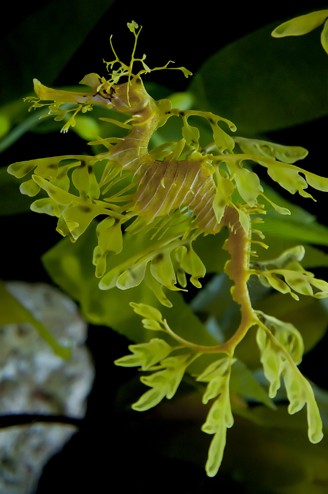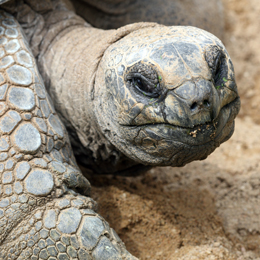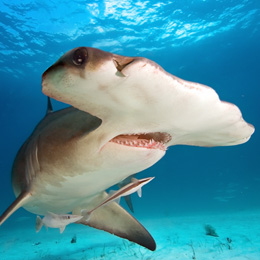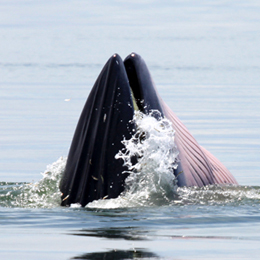Anatomy and Characteristics
Leafies are truly a visual delight with their beautiful yellow and brown bodies and olive-tinted appendages. Their colors change according to their diet and location. They have a transparent dorsal and pectoral fins situated on the back and neck respectively. Leafy seadragons use their numerous spines for protection. Their eyes are situated on the upper part of their long, thin snout. Leafy seadragons do not seem to be nocturnal creatures and remain active during the day.
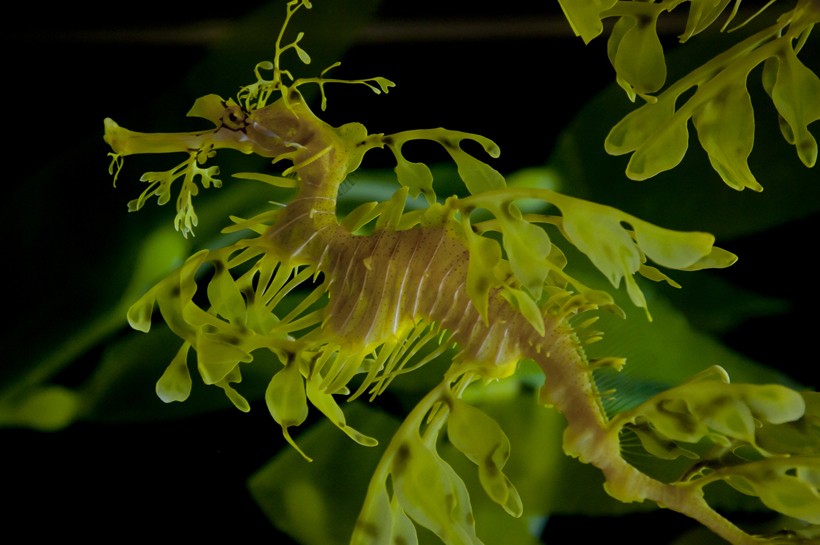
The leafy seadragon consists of a yellow-brown body with olive-tinted appendages.
?
Image credits: Kris Wiktor/Shutterstock
The adult leafy seadragons are seldom preyed upon as they are very good at camouflaging. That's why they can live long, up to 10 years. These unique sea creatures can grow as long as 35 cm, and weigh only a quarter of a pound. Though the average size is around 24 cm (10 inches).
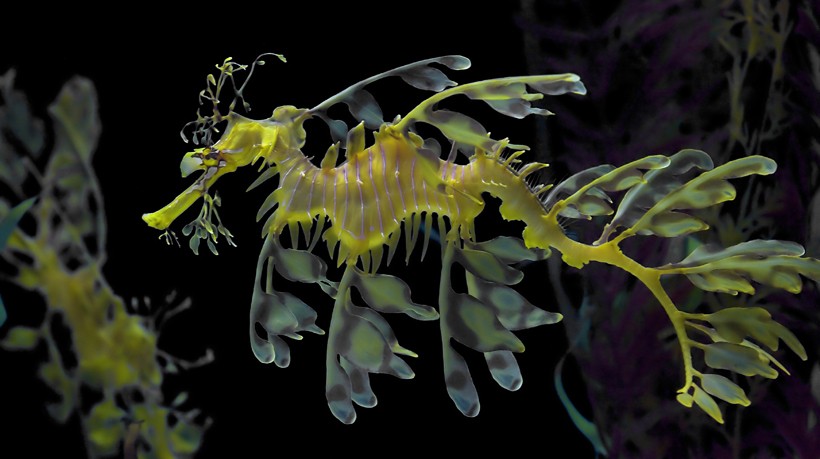
The colors change according to their diet and location.
?
Image credits: Kjersti Joergensen/Shutterstock
Seadragons are closely related to seahorses (Syngnathiformes family). While the leafy seadragon is the only species in genus Phycodurus, they are close related to the weedy seadragon (Phyllopteryx taeniolatus) and recently (2015) discovered Ruby seadragon (Phyllopteryx dewysea). While leafy seadragons have spectacular leaf-like appendages in yellow, brown and olive-green colors, weedy seadragons have less ornate red and bright yellow appendages. However, they both can camouflage, making it difficult for the predators to detect their presence. Weedy seadragons are longer and more slender that the leafies. The Ruby seadragon is red of color. It is believed that this color is a more efficient camouflage in the deeper waters since red hues are absorbed better.
Habitat
Australia's temperate kelp-covered rocky reefs are home to the leafy seadragon. They are found in the Western and Southern coasts of Australia.They thrive in 4 to 15 meters deep waters but can also go deeper than that (up to 50 m).
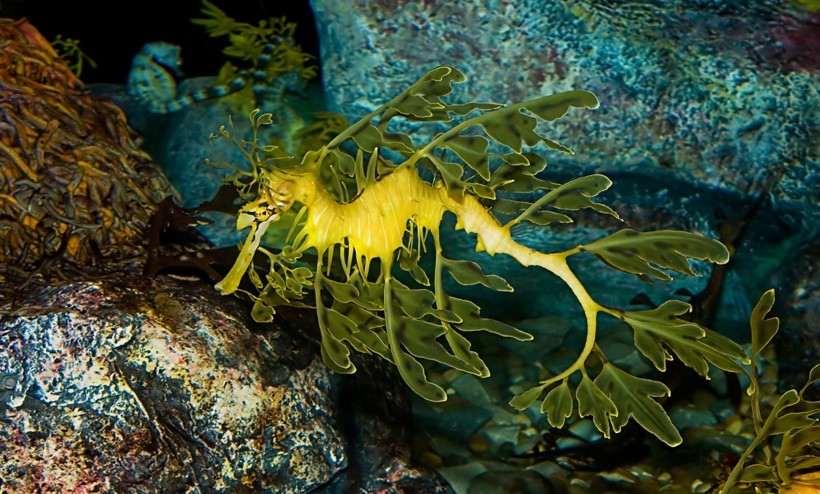
Mostly, the Leafy seadragon can be found in kelp-covered rocky reefs at a depth of around 4-15 meter
?
Image credits: Tony Wear/Shutterstock
In winter, the water temperature is around 14 degrees Celsius (57 degrees Fahrenheit), and 19 degrees Celsius (66 degrees Fahrenheit) in summer.
Diet, Preys & Predators
Leafy seadragons are carnivores and prey on mysid shrimps, larval fish, zooplankton and small crustaceans. They use their long, thin snouts to catch their victims and suck them up. Since they have no teeth, they cannot grind their prey. Their diet also depends on their locations and they are known to eat red algae that grow in the kelp forests. Leafy seadragons are slow and frequent eaters. The reason why they eat frequently is because they don't have a digestive system to store food.
Giant crustaceans, anemones, and fishes are the main predators that prey on the young leafy sea dragons. However, the adult leafies do not have any known predators as they rely on their remarkable camouflage skills to protect themselves.
Reproduction and Life Cycle
The males and females of this magnificent creatures look similar with the only difference being that female leafy seadragon is a little smaller than their male counterparts. Like sea horses, the responsibility of carrying eggs lies on the males whereas the females lay eggs. Typically timid, males become aggressive during the mating season.
Leafy sea dragons become sexually mature in about two years. Although they are solitary creatures, the male and female leafy seadragons come together to breed. The mating and breeding are carried out during the Australian summer in November and December.
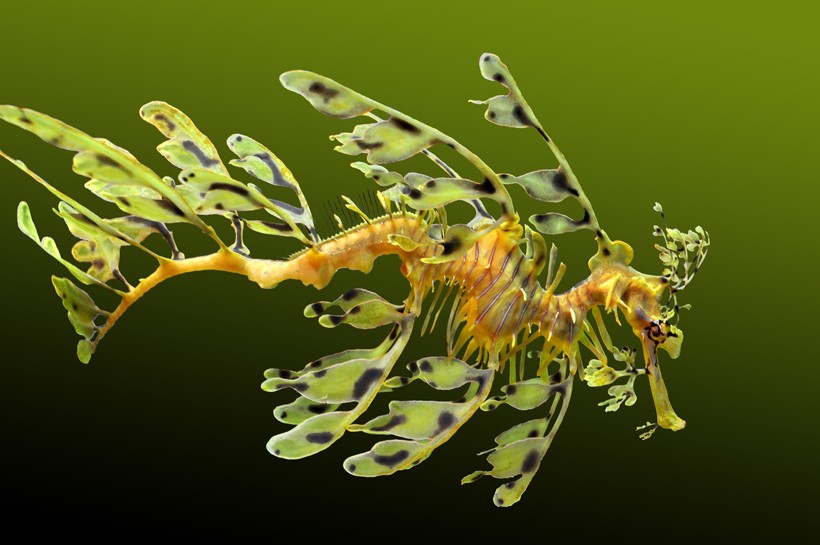
Leafy seadragons showcases sexual dimorphism where the males are larger in size than females.
?
Image credits: Michael Warwick/Shutterstock
Once the female lays pink eggs, around 250, it deposits them into the male's brood patch that is shaped into a tiny cup located at the base of the tail. During the exchange of the eggs, they are fertilized. Two clusters of eggs are produced, out of which 5% survive. The male leafy seadragon carries the eggs until they are hatched, for a period of four to six weeks. Over time, the color of the eggs changes from pink to orange or purple. Finally, the young leafy seadragons are released into the ocean.
The young ones are around 20 cm long and become independent as soon as they are born. These little ones have to fend for themselves, without the support of the adult leafy seadragons. The juvenile seadragons are very fragile and often become prey for other marine creatures. Therefore, very few survive to the age of maturity. Once the leafy seadragons are two years old, they start breeding.
Behavior
Leafy seadragons are poor swimmers; which is why, they remain still or drift along the ocean currents for the majority part of their lives. They tend to get tired often, so they are either feeding or resting. During strong ocean currents, they are at the risk of dying due to exhaustion. Storms are one of the reasons for leafy sea dragon deaths.
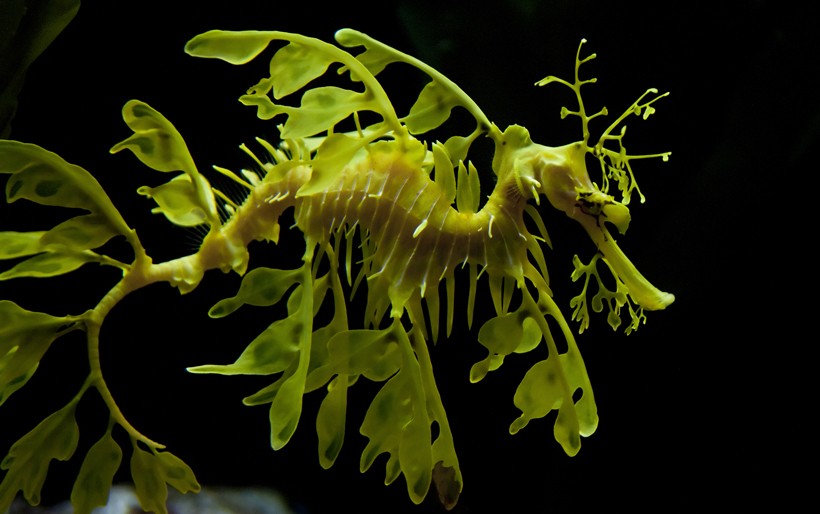
Since they are poor swimmers, they remain still or drift along the ocean currents
?
Image credits: Kris Wiktor/Shutterstock
The strong sense of direction allows leafy seadragons to swim for long distances (around 100 meters) in search of food and return to the same location effortlessly. Experts find this trait extremely interesting. Leafy seadragons are lone players and seldom interact with others of the same species. They are never in a family or pack. The male and female seadragons come together only for mating.
Conservation Status
The conservation status of leafy seadragons is near threatened. They are found only along the Southern and Western coasts of Australia. Unfortunately, they are becoming less common in these areas because of human exploitation. These beautiful creatures face survival threat from poaching. Unscrupulous collectors sell them to the pet trade or the thriving Chinese medicine markets. Diving enthusiasts often harass and chase leafy sea dragons to get the perfect pictures.
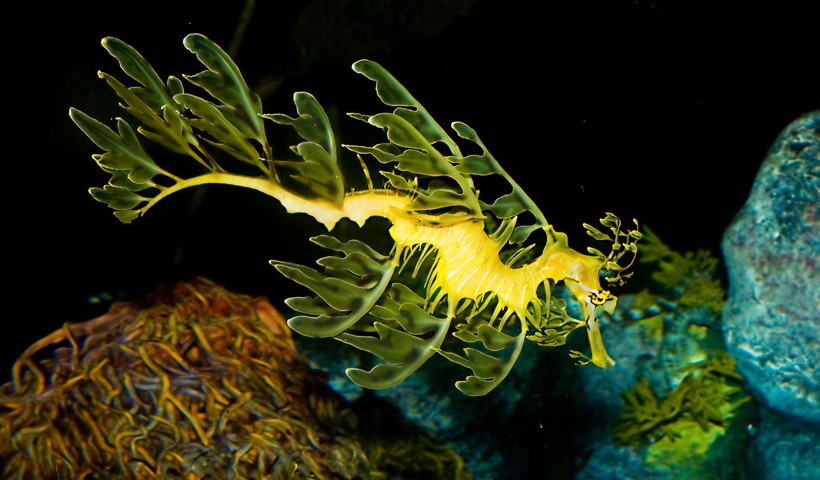
The leafy seadragon is near threatened.
?
Image credits: Tony Wear/Shutterstock
Leafy and weedy seadragons are legally protected species in South and Western Australia. The government is taking extreme measures to preserve the species and protect sea dragons from harassment. Limited information is available regarding the population size of the leafy sea dragons, and their reproduction rates. Lack of information makes it difficult to develop a fool-proof management and conservation plans. However, brooding males are collected every year, and the hatchlings are sent to various centers for research. Coastal communities are also involved in the conservation projects.
Cultural Depiction
It is believed that leafy seadragon brings good luck. They can be seen as symbols in festivities held in Australia, as home decor items, as tattoos, and in clothing. They are the official marine emblem of South Australia and proudly feature in logos of the Marine Life Society of South Australia Inc. and the Adelaide University Scuba Club Inc. To celebrate this majestic creature, Leafy Sea Dragon festival is held in South Australia. It is organized by the District Council of Yankalilla and attracts thousands of participants.
Evolutionary History
Very little information is available regarding the evolution of the leafy seadragons. The Syngnathidae family, that includes leafy seadragon, is believed to have emerged around 45 million years ago. The leafy seadragons have evolved, however, they still remain poor swimmers.
Funfacts
- Leafy seadragons are extremely fragile, and are easily injured.
- It is nearly impossible to spot them as they are camouflaged among seaweeds.
- Harassing male leafy seadragons carrying eggs leads to the reaction that the male drops the eggs.
- An animated movie, called “The Amazing Adventures of Gavin”, a Leafy Sea Dragon, was made in 2006 as a guide to marine conservation.
